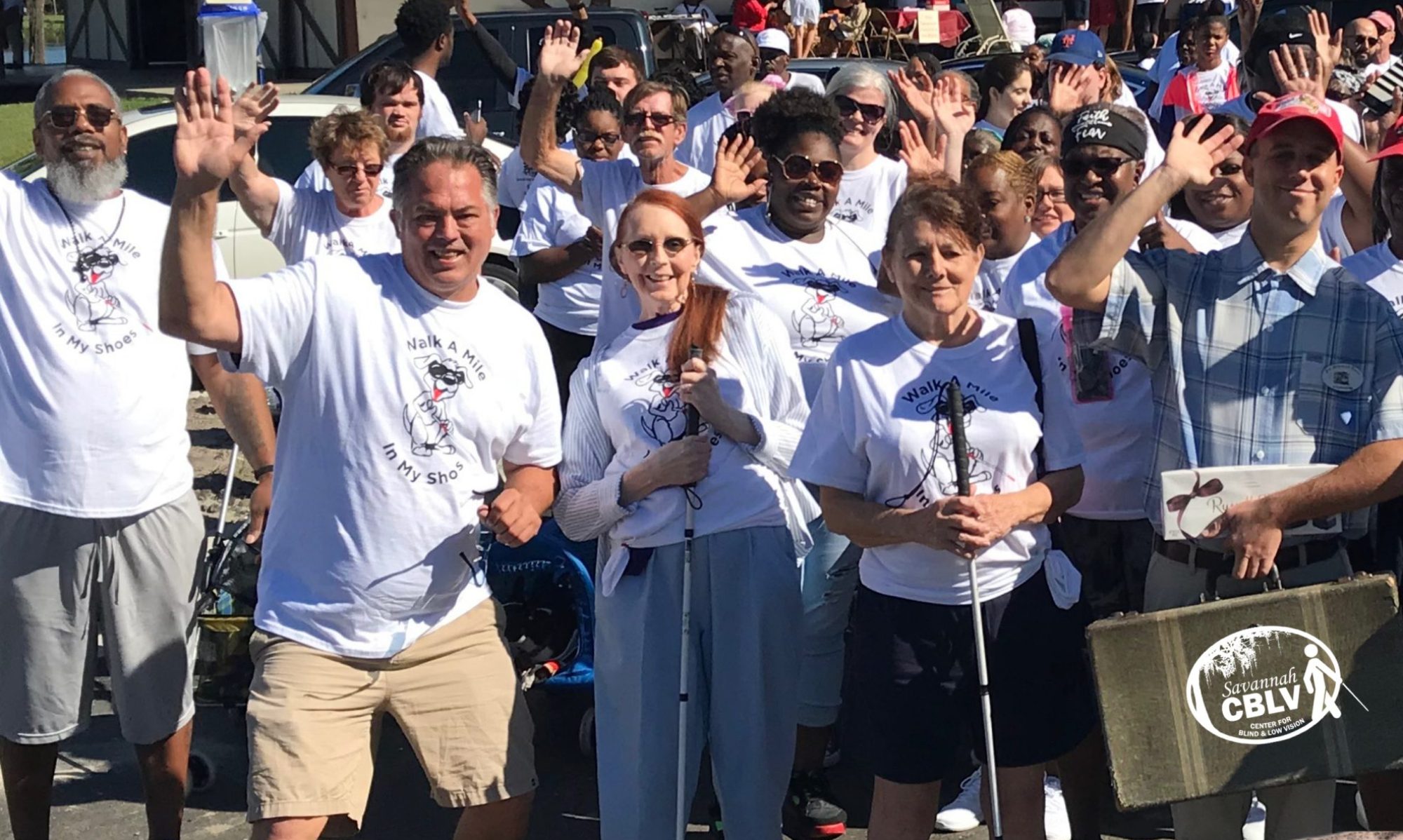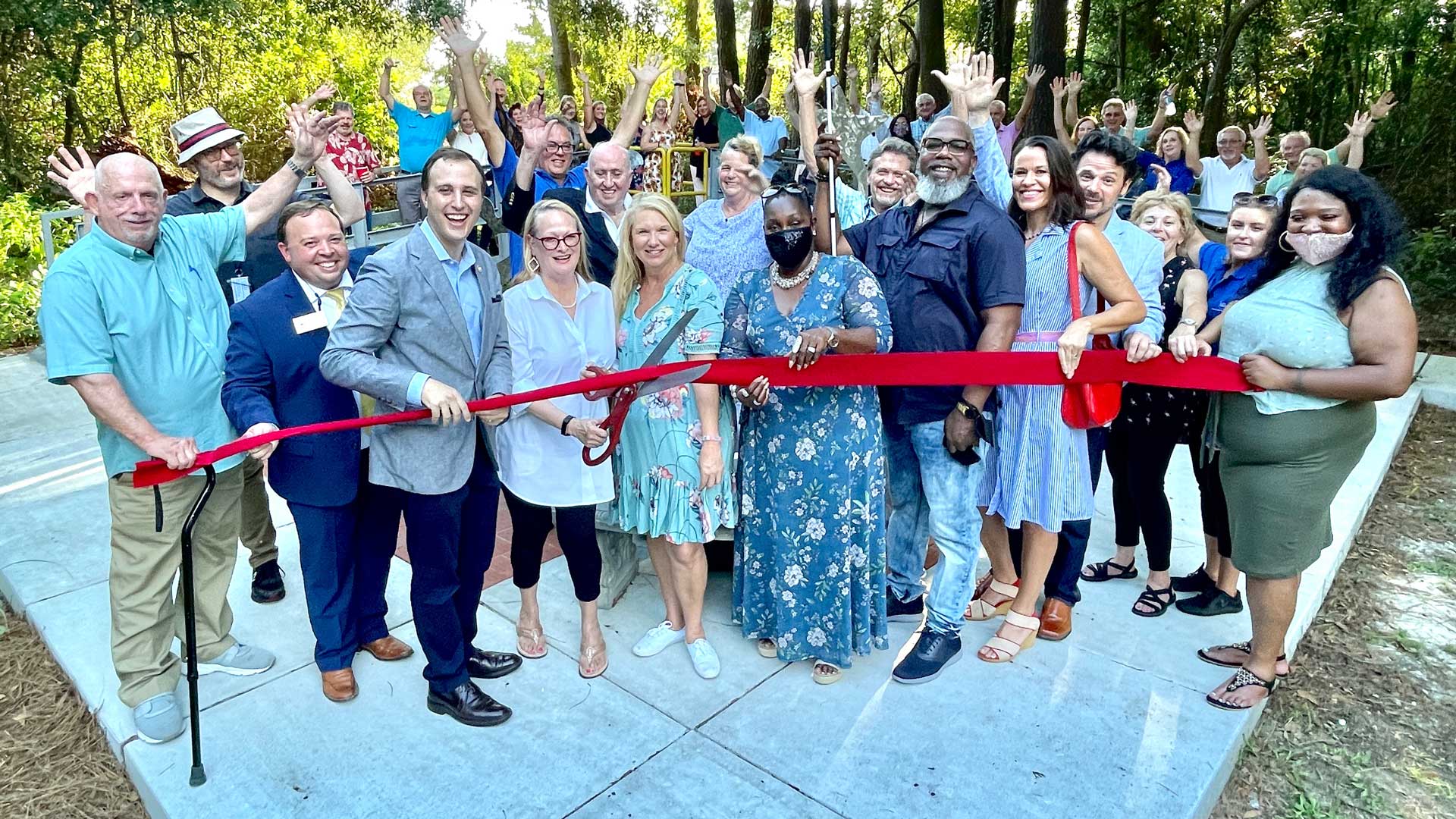Success Stories: Jessica Thomas
Success Stories at Savannah CBLV
My name is Jessica Thomas. Since attending Savannah Center for Blind and Low Vision, I have not only freed myself from my mental cage of depression, anger, and fear of life… I have also found new goals and views on life and what I am capable of as well. The Center is not only an education, loving, caring environment; it also serves as a safe haven for emotional support for those with low vision or even blindness. Being at the taught me that family does extend beyond your parents, sisters, brothers, etc., which is more than I expected. It’s been with great pleasure that I have been blessed with the opportunity to attend the Center and work alongside my peers, teachers, and the staff. If you’re looking for a personal view or inside view about the school or staff… then look no further. The Center opens doors for students…reintroducing them to a world of vision without having to have sight and teaching that you can do anything…you just have to do it different.
United Way Women’s Legacy Council
Initial Low Vision Management
Environmental Modifications
For patients with mild vision loss, simple environmental modifications may be sufficient for the individual to perform daily living tasks. Patients experiencing moderate to severe visual loss will also benefit from environmental modifications, but additionally will need low vision aids to help them function at their maximal visual potential.
Next we will discuss four concepts in environmental modifications that can help enhance visual functioning.
Illumination
As we age, we require more light to perform visual tasks. This is even more important for persons with visual impairment. More light can be achieved by increasing the number and power of light sources, as long as the manufacturers’ recommendations are not exceeded. The installation of fluorescent or flood lights can often help. One word of caution: some eye diseases cause increased sensitivity to glare which can counteract the benefits of increased illumination. The low vision specialist will provide guidance.
There may be more specific requirements for near-vision tasks. The most appropriate lighting for reading is a gooseneck or swing-arm lamp with an insulated, cone-shaped, reflective housing. Ideally, such task lighting should be available at all work stations throughout the home, for example: beside a reading chair, in the kitchen for food preparation, at the dinner table, writing desk, and bedside table. The light should not be directed into the eyes. It should usually be to the side and a little behind the better eye, or in front of the patient shining downward with the lower edge of the shade no higher than the tip of the patient’s nose. Different bulbs of the same wattage (i.e. flood, soft white, clear, etc.) will produce different tints. Several should be evaluated for comfort.
Glare
Full coverage sunglasses that provide opaque or translucent side shields are often useful. Dr. Cole wore darkly tinted “goggle” type lenses in bright sunlight.
There are two types of glare: discomfort glare and veiling glare.
Discomfort glare refers to uncomfortable reflections of light within the normal environment, such as shiny magazine pages, high gloss floors, and uncovered windows. Discomfort glare can cause people significant problems. The use of a cutout line guide for reading, the use of secured rugs, or of non-gloss flooring, venetian blinds or curtains can minimize these problem areas.
Veiling glare is caused by scattering of light within the eye particularly as can occur with evolving cataracts or from corneal disease. Visual resolution is adversely affected by glare and may be minimized by the use of yellow lens filters or Polaroid lenses.
Genuine photosensitivity is usually associated with diseases that affect the macula such as diabetic retinopathy, ocular albinism, and retinitis pigmentosa. Eye discomfort and impaired visual functioning may be present even at normal levels of illumination. Severe photosensitivity may cause “whiteout.” Control of illumination, absorptive filters, and the use of visors or brimmed hats are often useful.
Contrast
We could give pages of examples of contrast enhancement. Not every suggestion will benefit or be needed by every person with vision impairment. It is more important to understand the concept of using (1) bold colors and (2) high contrast between colors (e.g. black on white, or bright yellow on dark blue, rather than black on grey or red on blue), and then individualize for each person. Even a person who does not have normal color perception can benefit from high contrast.
Examples of using contrast in low vision rehabilitation include:
- Faceplates of electrical switches and outlets installed in contrasting color to the wall coloration.
- Contrast color of door and door facings with surrounding wall color.
- Dark-colored tablecloths or placemats on glass top tables.
- Colored tape or decals on sliding glass doors.
- Dark-colored bathmat placed over the edge of tub, or, alternatively, dark-colored adhesive to bottom of tub and electrical tape on tub edge.
- Floating tub toy in the bathwater to determine water level.
- Pour coffee into light-colored mug, not dark.
- White plates on dark placemats or tablecloth.
- Wrapping rings of bright tape around pot handles, knife handles, tool handles, etc.
- Colored toothpaste on white bristles; dark toothbrush in white holder.
- Taping leading edge of steps with contrasting color.
- Use yellow acetate sheets over reading material to improve contrast of print.
- Contrast color of carpets and walls to furniture colors.
Figure-ground perception
“Figure ground” or “visual clutter” describes the difficulty in perceiving multiple objects in close proximity, or an object against a patterned background. The eye must search through the visual clutter to find the desired target. For example, a few pills placed on a solid contrasting placemat may be relatively visible but the same pills placed on a flowered mat would seem to disappear.
Dr. Cole was advised to decrease clutter in his work spaces and to use solid backgrounds behind all important visual targets, particularly in his professional office.
Virtual Health Care Team® contains Low Vision Assessment and Rehabilitation Case Studies.
Congratulations to our recent graduates!
The Savannah Center for Blind and Low Vision held a ceremony for its most recent graduates on January 30th. Guest Speaker, Dr. Robin Ray, M.D. spoke to the graduates and their families about the importance of taking care of your vision and the benefits of the Center to the community.
- Robert Vaughan
- Margie Wright
- Gregory Kennedy
- Anthony Pirtle
- Juliet Donald
- Dorsena Smith
- Fredrick Phillips

